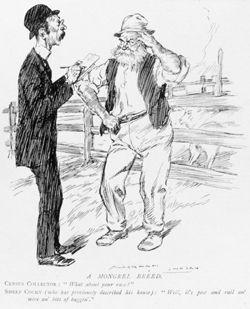Forging the Nation - Bushman & digger
- Forging the Nation: home
- Federation
- National identity
- Seeking security
- The First World War
- Towards the future
- Australians
- Introduction
- Anzac Day
- Bushman & Digger
- Symbols
Bushman & digger
Australia developed as a mainly urbanised society, but it was in the country - the bush - that the national character was defined. The hardship and remoteness of bush life could drive people to despair and poverty; women, in particular, carried a heavy burden. But associations with pioneering spirit and independence created a romantic ideal. The shearers, stockmen and rural labourers - the bushmen - were seen to possess the characteristics of hardiness, democratic spirit, mateship and resourcefulness. The bushman became a romantic stereotype.
During the First World War the term digger became popular for describing the Australian soldier. The word fell easily into the military language in France and Belgium, where soldiers were continually digging trenches. The digger and the Anzac assumed all the virtues previously attributed to the bushman, central among which were mateship and egalitarianism.

A mongrel breed - From The Bulletin 27 April 1911, pg 14. Collection of the Australian War Memorial.
Charles Wheeler (First World War official war artist)
The digger
oil on canvas
painted in Melbourne 1926
